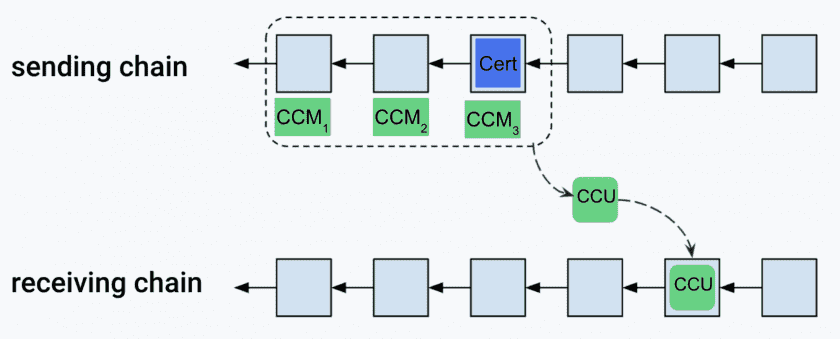Linsk becomes interoperable. We presented the solution at Lisk.js 2021, our annual developer platform on May 22nd and 23rd of this year. We at Lisk are accordingly proud to be able to present a solution for the sacling and interoperationalization of the ecosystem.
Our blockchain interoperationalization solution consists of eight parts, we are talking about roadmaps. Each part of the roadmap defines a key aspect of the solution, also called a Lisk Improvement Proposal (LIP).
Lisk’s eight roadmap goals
Definition of the cross-blockchain messaging protocol
Aim this Roadmap component is the introduction of data structures that are required for the exchange of messages between the blockchains participating in interoperability. In addition, this LIP provides an overview of various basic settings for the interoperability of the blockchain.
Sidechain registration and lifecycle
This LIP is intended to define the life cycle of a sidechain. We start with the connection to the ecosystem and its connection to the mainchain, through to its possible termination. The restoration of terminated blockchains is also defined in this roadmap. In addition, the registration of possible sidechains is part of this roadmap.
Definition of State Model and State Root
The aim of this roadmap is also to introduce a new one State model and the concept of the state root in the Lisk protocol. Here we rely on Merkle Trees, similar to those used in blockchains such as Bitcoin.



New token standard of the ecosystem
In this roadmap sub-item we carry out the Lisk token standard a. Processes such as minting and burning are also described in this roadmap. The LSK tokens are fungible and exchangeable within the various blockchains. Non-fungible tokens are also part of Lisk.
Update Lisk-BFT for the interoperationality of blockchains
Lisk-BFT is the new consensus protocol introduced as part of Lisk Core 3.0. It defines a protocol for validators to finalize blocks using two rounds of voting on blocks. However, to support the new proof-of-authority mechanism and cross-chain certification for interoperability, the BFT protocol requires some changes that are covered by this roadmap goal.
The block-header scheme was touched upon in several other LIPs. Including the LIPs State Model and State Root. This roadmap goal aims to cover all changes to the block header schema in one place, something that is done by the LIP “New block header Scheme” is achieved.
New mechanism for selecting validators
Lisk is currently still working on the consensus mechanism Delegated Proof-of-Stake (DPoS). However, this roadmap aims to offer an alternative mechanism for future sidechains and diverse applications. More precisely leads Lisk Proof-of-Authority (PoA). This new consensus mechanism will propagate new blocks in the future.
Improved signatures
With the update, MultiSig transactions are now also possible. This makes cross-chain swaps much more economical. In addition, so-called BLS signatures into the system.
Future Outlook: What To Expect From Lisk?
One thing is clear: the work of the Lisk research team is not over yet. The team will continue to work on and improve the Lisk ecosystem. In the future, we will primarily work on issues such as scaling and improving transaction speeds. It is also important to us to optimize the user experience. We will therefore work more closely with our colleagues in the UI / UX department in the future.
We also want to pave the way for Lisk to better interact with other blockchain ecosystems. In the future, Lisk will not only become a solid blockchain, but will also be able to cooperate with many other projects. Until then, we look forward to feedback from the community at Lisk forum.
You can find the entire Lisk.js 2021 event here.
Sponsored Post
Sponsored Posts are paid articles for whose content the advertising companies are solely responsible. BTC-ECHO bears no liability for the promised services or investment recommendations.
